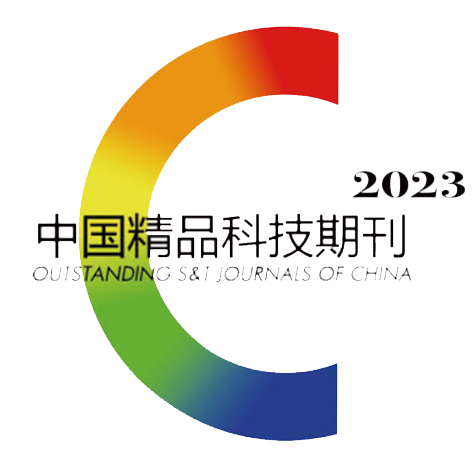| [1] |
Mcgrath T E, Wooten J B, Chan W G, et al. Formation of polycyclic aromatic hydrocarbons from tobacco: the link between low temperature residual solid (char) and PAH formation[J]. Food & Chemical Toxicology An International Journal Published for the British Industrial Biological Research Association,2007,45(6):1039−1050.
|
| [2] |
Dobrinas S, Birghila S, Coatu V. Assessment of polycyclic aromatic hydrocarbons in honey and propolis produced from various flowering trees and plants in Romania[J]. Journal of Food Composition & Analysis,2008,21(1):71−77.
|
| [3] |
Guillén, María D, Sopelana P, et al. Polycyclic aromatic hydrocarbons in liquid smoke flavorings obtained from different types of wood. Effect of storage in polyethylene flasks on their concentrations[J]. Journal of Agricultural & Food Chemistry,2000,48(10):5083−7.
|
| [4] |
Bubba M D, Zanieri L, Galvan P, et al. Determination of polycyclic aromatic hydrocarbons (PAHs) and total fats in human milk[J]. Annali Di Chimica,2010,95(9-10).
|
| [5] |
Moret S, Piani B, Bortolomeazzi R, et al. HPLC determination of polycyclic aromatic hydrocarbons in olive oils[J]. Zeitschrift Für Lebensmittel-Untersuchung und-Forschung A,1997,205(2):116−120.
|
| [6] |
Mônica C R C, Maria C F T. Polycyclic aromatic hydrocarbons in Brazilian vegetables and fruits[J]. Food Control,2003,14(1):49−53. doi: 10.1016/S0956-7135(02)00052-X
|
| [7] |
Mottier P, Parisod, Véronique, et al. Quantitative determination of polycyclic aromatic hydrocarbons in barbecued meat sausages by gas chromatography coupled to mass apectrometry[J]. Journal of Agricultural & Food Chemistry,2000,48(4):1160−1166.
|
| [8] |
Chen J, Chen S. Removal of polycyclic aromatic hydrocarbons by low density polyethylene from liquid model and roasted meat[J]. Food Chemistry,2005,90(3):461−469. doi: 10.1016/j.foodchem.2004.05.010
|
| [9] |
Khan R, Islam M S, Tareq A R M, et al. Distribution, sources and ecological risk of trace elements and polycyclic aromatic hydrocarbons in sediments from a polluted urban river in central Bangladesh[J]. Environmental Nanotechnology Monitoring & Management,2020,14:100318.
|
| [10] |
Pulleyblank C, Kelleher B, Campo P, et al. Recovery of polycyclic aromatic hydrocarbons and their oxygenated derivatives in contaminated soils using aminopropyl silica solid phase extraction[J]. Chemosphere,2020,258:127314. doi: 10.1016/j.chemosphere.2020.127314
|
| [11] |
余可垚, 林宏, 胡国绅, 等. 进出口肉制品中多环芳烃检测方法研究进展分析[J]. 食品安全导刊,2021(12):173−174.
|
| [12] |
乔双雨, 龙明华, 张会敏, 等. 正交试验优化蔬菜中多环芳烃检测前处理工艺[J]. 食品工业科技,2019,40(23):104−110,118.
|
| [13] |
杨调调, 何志勇, 秦昉, 等. 美拉德反应对产品风味品质的影响及其衍生危害物研究进展[J]. 食品安全质量检测学报,2017,8(3):854−861.
|
| [14] |
Demetris K, Andri K, Eftychia C, et al. Determination of polycyclic aromatic hydrocarbons in traditionally smoked meat products and charcoal grilled meat in Cyprus[J]. Meat Science,2020,164(Jun.):108088.1−108088.6.
|
| [15] |
Andrés J R, Abdelmonaim A, Evaristo B. Trace level determination of polycyclic aromatic hydrocarbons in raw and processed meat and fish products from European markets by GC-MS[J]. Food Control,2019:101.
|
| [16] |
Ledesma E, Rendueles M, Díaz M. Contamination of meat products during smoking by polycyclic aromatic hydrocarbons: Processes and prevention[J]. Food Control,2016(60):64−87.
|
| [17] |
张渝, 张新申, 杨坪, 等. 减压吹扫捕集-气相色谱-质谱联用分析水样中的多环芳烃[J]. 分析化学,2011,39(6):799−803.
|
| [18] |
Fushimi A, Hashimoto S, Ieda T, et al. Thermal desorption - comprehensive two-dimensional gas chromatography coupled with tandem mass spectrometry for determination of trace polycyclic aromatic hydrocarbons and their derivatives[J]. Journal of Chromatography A,2012,1252:164−170. doi: 10.1016/j.chroma.2012.06.068
|
| [19] |
肖昭竞, 童兰艳, 代政华, 等. 肉制品中多环芳烃检测技术研究进展[J]. 食品工业,2019,40(12):244−247.
|
| [20] |
安长伟, 贾思齐, 杨悦锁, 等. 超声提取-气相色谱法测定土壤中多环芳烃(PAHs)的实验研究[J]. 应用化工,2017,46(3):597−600.
|
| [21] |
方杰. 浙江沿海沉积物和海洋生物中持久性有机污染物及重金属的分析与研究[D]. 杭州: 浙江大学, 2007.
|
| [22] |
周贻兵, 李磊, 吴玉田, 等. 高效液相色谱荧光法测定PM2.5中[a]芘含量[J]. 微量元素与健康研究,2020,37(5):61−62.
|
| [23] |
Gustav G, Prasanna E, Ashantha G, et al. Optimized simultaneous pressurized fluid extraction and in-cell clean-up, and analysis of polycyclic aromatic hydrocarbons (PAHs), and nitro-, carbonyl-, hydroxy-PAHs in solid particles[J]. Analytica Chimica Acta,2020(1125):19−28.
|
| [24] |
林晶. 加压流体萃取-气质联用法测定土壤中15种多环芳烃[J]. 科技创新与应用,2020(9):121−125.
|
| [25] |
李国文, 吉正元, 杨春涛, 等. 加速溶剂萃取-气相色谱质谱法测定土壤中16种多环芳烃研究[J]. 安全与环境学报,2019,19(2):591−599.
|
| [26] |
王彤彤. 多环芳烃在斑马鱼体内的生物富集效应研究[D]. 大连: 大连海事大学, 2019.
|
| [27] |
邓晓燕, 张大海, 李先国. 气相色谱法测定水体中多环芳烃的前处理方法优化[J]. 分析试验室,2015,34(5):525−528.
|
| [28] |
齐颖. 油炸肉制品加工过程中多环芳烃的形成及控制研究[D]. 天津: 天津科技大学, 2015.
|
| [29] |
国家卫生和计划生育委员会, 国家食品药品监督管理总局. GB 2762-2017 食品安全国家标准 食品中污染物限量[S]. 北京: 中国标准出版社, 2017.
|











 DownLoad:
DownLoad: